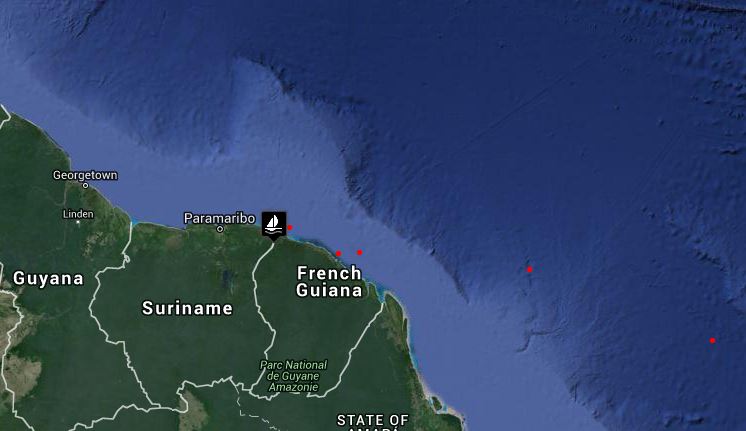No Salvation at Ile St. Joseph
/Iles du Salut, French Guiana
As promised, we did manage to get our act together, launch the dink and head ashore today to the Salvation Islands. We ventured to Ile St. Joseph first. There's a small, modern floating dock for unloading passengers and tying up the dinghy, but other than a tiny, private hotel, the island offers no amenities other than a well-maintained walking path around the perimeter of the island.
Walking and easing back into civilization were high on our list, so this was right up our alley. Once again, our Maps With Me iPad app came through with the island's walking trails delineated. How cool is that?
The French first sent colonists to the Guianas in the mid-17th century in hopes of establishing a stronghold in South America, land of the mythical, golden El Dorado. They used these islands as a staging point for new arrivals before moving them to the mainland. Lack of planning and supplies resulted in a huge death toll; most of the 13,000 colonists died of disease. That however, did not deter the French from sending convicts here. From 1852 to 1862, the French emptied their continental prisons and shipped 13,000 undesirables to the Guianas. Convict deportation to the Guianas continued through the mid-20th century. There was no salvation here for the early colonists, nor for the prisoners that followed.
Ile St. Joseph was initially used for political prisoners … any adversary of Napoleon III was considered a criminal and deported. Prisoners were housed in small, isolated cells and were not allowed to communicate or smoke. Guards ensured this by constantly walking on the metal grids that formed the ceilings of each cell. The prisoners were required either to stand or lay on the bare ground. There were no beds and or chairs. Stools were not allowed into the cells until 1936.
Walking along the pleasant paths under the shade of the palm trees with birds singing all around us was a delight. As we climbed a stone-paved road to the main prison block that was exposed to the blazing sun, our perspective changed. Insects, spiders and lizards were in abundance. We saw a long train of bright red leaf-cutter ants marching up the hill along side us.
The intense heat was suffocating. The thick, green tropical foliage had reclaimed many of the buildings and softened their austere look, but we knew what had occurred here and couldn't imagine how the men had endured it. A life sentence was anything over 8 years. No one was expected to live longer than that in these conditions. We thought of other prisons we've visited … Port Arthur and Sarah Island in Tasmania and America's Alcatraz Island and wondered what heinous crime, if any, could warrant such barbaric, brutal treatment.
From a vantage point on the north side of the island, we could see Devil's Island, the worst of the worst.
No visitors are allowed on the island and this is strictly enforced, due to the European Space Center monitoring stations there, though nothing was visible. What we could see was one solitary building, supposedly where Captain Alfred Dreyfus was housed during his wrongful incarceration for treason.
The sky suddenly turned dark and opened up with a heavy, hard, tropical rain. We sought shelter under the thick foliage, though in truth, the shower felt good. The same view of Devil's Island changed dramatically with the downpour.
The rain cleared as suddenly as it had begun. A small beach, which was obviously not available to the prisoners, came into view. It was appealing, but signs forbidding swimming indicated strong currents, undertow and lots of sharks. We passed on a dip.
Just beyond the beach was a cemetery, an immediate draw for us. We walked through rows of burial mounds, outlined with rocks, most markers long since gone. The few markers that were still legible were for the military, guards and their family. Prisoners' corpses were flung unceremoniously into the sea to feed the sharks.
We completed our circuit of the tiny island, only a couple kilometers around, and headed back to Cups for a cold beer. Ile Royale is next on the agenda.













